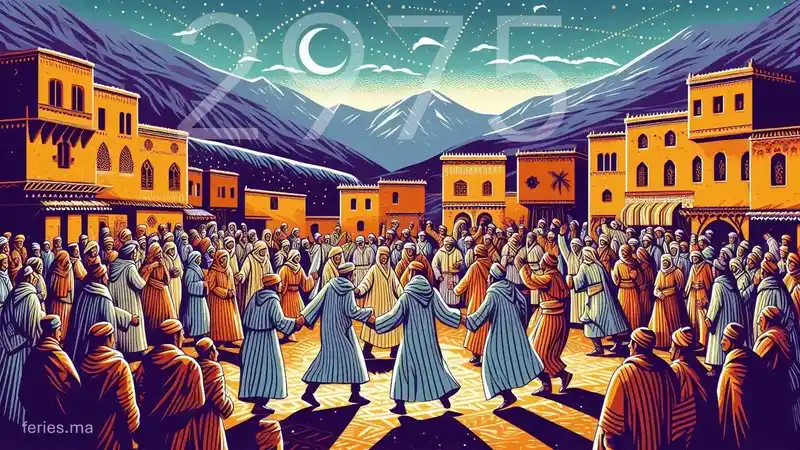Morocco: Amazigh New Year 2975 - 2025
In 2025, Yennayer will celebrate the Amazigh New Year on January 14, marking the start of the year 2975 according to the ancient agrarian Amazigh calendar.

Amazigh New Year 2975: A Cultural Celebration in Morocco
The Amazigh New Year, marking the year 2975 in the traditional Amazigh calendar, is a significant cultural event in Morocco. Celebrated each year in mid-January, it highlights the deep-rooted history, traditions, and identity of the Amazigh people, who have inhabited North Africa for thousands of years. This celebration, also known as Yennayer, has grown in importance, and 2024 marks the first time it is recognized as an official public holiday in Morocco, a reflection of the country’s appreciation for its rich Amazigh heritage.
When is the Celebration?
The Amazigh New Year is celebrated on January 14 every year, depending on the region. This date corresponds to the beginning of the agricultural year, rooted in a traditional farming calendar. The celebration is symbolic of a new season of growth and abundance, a wish for good harvests, prosperity, and well-being in the year to come.
Traditions and Events
The Amazigh New Year is rich in cultural customs and rituals that are passed down through generations. Although these traditions can vary from region to region, they all share a common theme of celebrating nature, family, and community.
Agricultural Rituals: In rural areas, particularly in the Atlas Mountains and Berber villages, this day is a time for giving thanks to the earth and praying for a successful farming season.
Traditional Attire: People dress in their finest Amazigh clothing during the celebrations. Women wear vibrant, colorful garments adorned with silver jewelry, which often holds symbolic meaning, while men typically wear traditional robes or djellabas.
Music and Dance: Music and dance play a central role in the celebrations. The lively rhythms of Amazigh music accompany traditional dances such as Ahidous and Ahwash, where groups of men and women perform in circles, clapping and chanting to the beat of drums and tambourines.
Family Gatherings: Much like other cultural holidays, family is at the heart of the Amazigh New Year. Relatives come together to share meals, exchange stories, and celebrate the arrival of the new year. The warmth of these gatherings strengthens community ties and reinforces cultural identity.
Dishes Served on Yennayer
Food is an integral part of the Amazigh New Year, with special dishes prepared to mark the occasion. Traditional meals vary by region, but the following dishes are commonly served:
- Tagoula (or Takla) is a type of porridge made from barley or wheat. This dish is often mixed with butter and sometimes topped with olive oil or honey. It is a symbolic meal representing prosperity and fertility.
- Couscous: The quintessential Moroccan dish is a staple of the celebration, often prepared with seven different vegetables to signify good fortune. In some households, couscous is made with dried meat or chicken, served as a hearty meal for the family.
- Desserts: Sweet treats such as Rfissa or Baghrir (Moroccan pancakes) may be served with honey or butter. These dishes are enjoyed during family gatherings and add a festive touch to the meal.
Official Recognition of Yennayer
In 2024, the Moroccan government declared the Amazigh New Year an official holiday. This is a significant milestone in recognizing the cultural importance of the Amazigh community, which makes up a large portion of Morocco’s population. The decision to make this day a national holiday has been celebrated as a step toward greater inclusion of Amazigh traditions and values in the broader Moroccan cultural landscape.
The Amazigh New Year, 2975 in the Amazigh calendar, is a celebration that honors the ancient traditions of the Amazigh people, blending agricultural rites, community, and cultural pride. With its recognition as an official public holiday in Morocco, this day serves as a reminder of the country’s rich multicultural identity and its commitment to preserving and celebrating its diverse heritage.